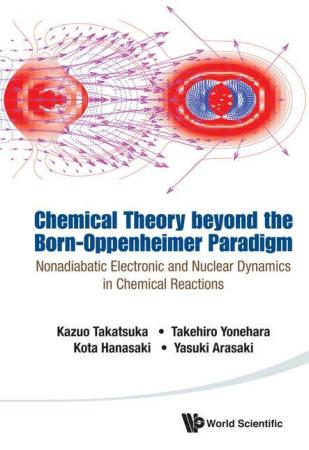Mar 9 2015
This volume offers a clear perspective of the relevant ideas and methodology relevant to the chemical theory of the next generation beyond the Born-Oppenheimer paradigm. It bridges the gap between cutting-edge technology of attosecond laser science and the theory of chemical reactivity. The essence of this book lies in the method of nonadiabatic electron wavepacket dynamic, which will set a new foundation for theoretical chemistry. The future direction of chemical reaction theory is clearly illustrated.
 This is the cover of: Chemical Theory beyond the Born-Oppenheimer Paradigm. CREDIT: World Scientific, 2015
This is the cover of: Chemical Theory beyond the Born-Oppenheimer Paradigm. CREDIT: World Scientific, 2015
The Born-Oppenheimer framework to treat molecules have dominated the theoretical foundation of chemistry in the 20th century since their seminal paper in 1927 and even to date, which dynamically separates electronic and nuclear motions under an assumption that electrons can follow the nuclear dynamics almost instantaneously. This idea successfully leads to the static view of molecular geometry and the notion of electronic stationary-states that adjust themselves to any nuclear configurations in space. However, nonadiabatic interactions and associated quantum transitions arising from the breakdown of the Born-Oppenheimer separation are critically important in chemical reaction dynamics. This is because almost all the interesting chemical and even biological processes involve nonadiabatic transition events in them. Besides, the recent progress of laser technology makes it possible not only to track the real-time dynamics of ultrafast chemical reactions but also to control chemical reactions in terms of intense electromagnetic vector fields. These situations of are far from those of dates when the classic theories such as the Born-Oppenheimer approximation have been established.
Therefore this book describes the recent theories of chemical dynamics beyond the Born-Oppenheimer framework from a fundamental perspective of quantum wave packet dynamics. To formulate these issues on a clear theoretical basis and to develop the novel theories beyond the Born-Oppenheimer approximation, the authors start from outlining the basic classical and quantum nuclear dynamics on an adiabatic (the Born-Oppenheimer) potential energy surface. Then the recent notion of nonadiabaticity in electron dynamics is fully introduced. They further proceed to the discussion about the interaction of molecular nonadiabatic states with intense laser fields. In this way, the book penetrates on one hand into unknown domains of molecular properties such as (i) electron-nuclear quantum entanglement due to nonadiabatic transitions and its experimental observation, (ii) coherence and decoherence of electron and nuclear wavepackets, which qualitatively dominate the quantum mechanical probabilities of quantum transition dynamics, (iii) characteristic phenomena arising from the time-dependent fluctuation of molecular electronic states, (iv) the physics of interference between the nonadiabatic dynamics and external fields, and so on, which cannot be touched upon within the current framework of the Born-Oppenheimer quantum chemistry.
The authors are all very active scientists working on the theory of chemical reaction dynamics, developing their own theories beyond the traditional Born-Oppenheimer framework. The book is not simply a review of the existing literature but vividly presents the ideas behind and also the related methodological and technical aspects of nonadiabatic electron dynamics.
Many examples of new findings achieved in the authors' long-standing studies are also shown, which will enrich readers' view of theoretical and experimental worlds of chemistry.